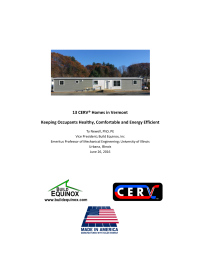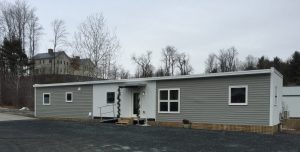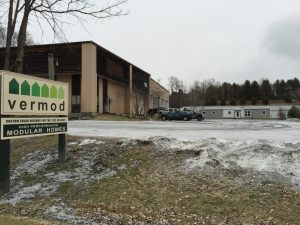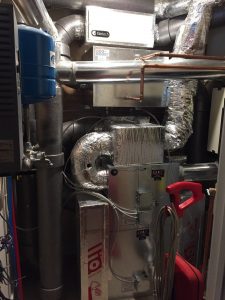Question: What has more than 10,000 data points?
Answer: An extensive report covering indoor air quality, comfort and energy usage in thirteen Vermod high performance homes with CERV fresh air ventilation systems. A copy of the report can be obtained below:


Vermod (vermodhomes.com) is a manufacturer of high performance, modular homes. Located near White River Junction, Vermont, Vermod began manufacturing homes in 2013. Formed in response to Hurricane Irene’s disproportionate destruction of manufactured (mobile) homes throughout Vermont in 2011, Vermod is demonstrating that a home can be high quality, super-efficient, comfortable, healthy and affordable.
Vermod’s owner, Steve Davis, is a 2010 Efficiency Vermont “Best of the Best” award winning homebuilder. During my visit to Vermod, it is very clear that Steve is passionate about quality and cares about each customer’s satisfaction.

Collectively, the thirteen Vermod homes’ 12,500sqft exceed European Passive Haus standards by nearly 20%! Vermod home primary energy usage averages 9kWh/sqft per year (97kWh/sqm per year) in comparison to the standard’s 11kWh/sqft per year (120kWh/sqm per year). The Vermod homes’ occupancy energy usage is 3650kWh per person, which is less than the current PHIUS (Passive House Institute US) standard of 6200kWh per person and the future PHIUS target of 4200kWh per person. And, this is in one of the harshest US climatic zones, and in a small home where the Passive Haus standard is especially challenging.
So how do Vermod homes reach such an exceptional level of performance? A highly insulated and super-sealed shell that is modestly windowed is essential. Vermod homes feature a 1 ton, cold temperature mini-split heat pump, a hybrid (heat pump) water heater, a smart CERV fresh air conditioner, and Energy Star appliances. As a smart ventilator (see our review in this newsletter of Lawrence Berkeley National Laboratory report “Houses Are Dumb Without Smart Ventilation”), the CERV’s sensors and smart algorithms automatically bring in the mount of air needed to keep all rooms fresh. Not too much fresh air, and not too little. Just the right amount fresh air delivered automatically when you need it the most.
The CERV works in a synergistic manner with the home’s mini-split heat pump and hybrid water heater, helping to uniformly distribute healthy air and comfort. Our report details how these three primary energy systems cooperate to create a high efficiency house.

We found that all thirteen homes have excellent air quality with the CERV keeping average indoor air pollutant concentrations below user selected setpoints, even in the coldest months of winter. VOCs were the dominate pollutant, with half of the homes requiring fresh air because of VOC levels. A quarter of the homes were dominated by CO2, indicating that humans were the primary pollutant source of these homes. A quarter of the homes were found to have similar levels of VOC or CO2 fresh air venting. Fresh air ventilation flowrates ranged from a low of 10cfm (cubic feet per minute) to 160cfm. Generally, fresh air ventilation requirements increased with occupancy, however, some homes with few people had high pollutant generation rates while some homes with high occupancy had low pollutant generation.
The one ton, cold temperature mini-split heat pump provided sufficient heating and cooling capacity in all homes under all weather conditions. Homeowner preference dictated the temperature level in the homes, with one home maintaining 75F to 80F during the coldest part of winter, and another keeping level 72F comfort temperature throughout the year. Most homeowners maintained cooler temperatures in their homes during winter (~68F) and warmer temperatures in the summer (~74F) as is typical in conventional homes.
Collectively, half of the Vermod home energy usage (12kWh/day) is for comfort conditioning and ventilation, and half (12kWh/day) for everything else (water heating, appliances, lights, plug loads). The average occupancy of the 13 Vermod-CERV study homes was 2.4 persons. Energy usage for Vermod homes with more than 2.4 people require more energy for people (water heating, appliances, lights and plug loads) while homes with less than 2.4 persons require less energy for people-related loads. Details of each home’s energy usage (whole house and individual appliance loads), comfort conditions and air quality are included in the Vermod-CERV report. And, of course, please contact us for any questions!
Vermod is growing, and hopefully we will be seeing more of these incredible homes spread across the country!























